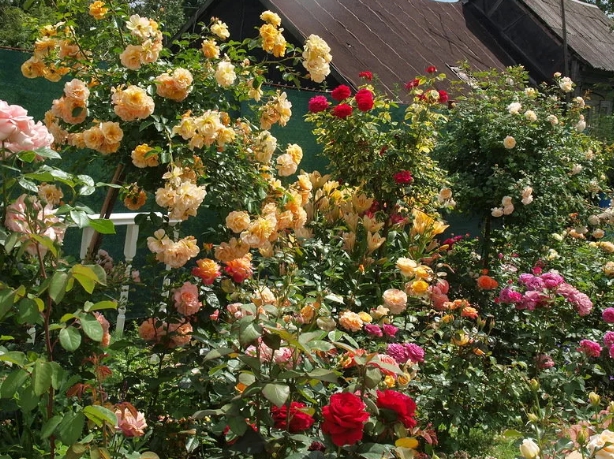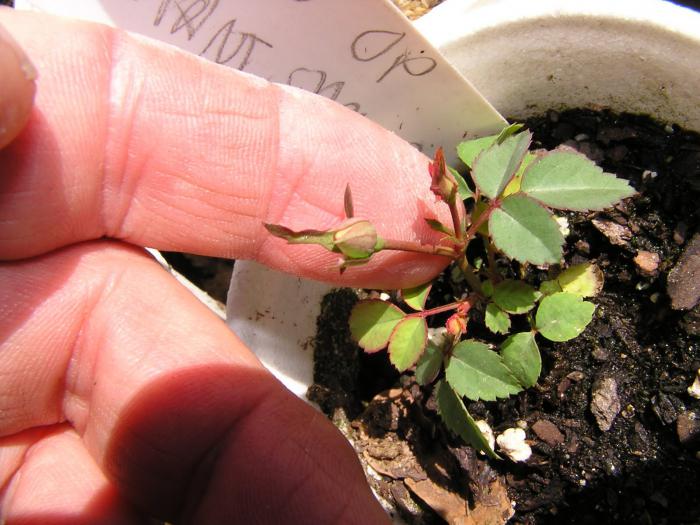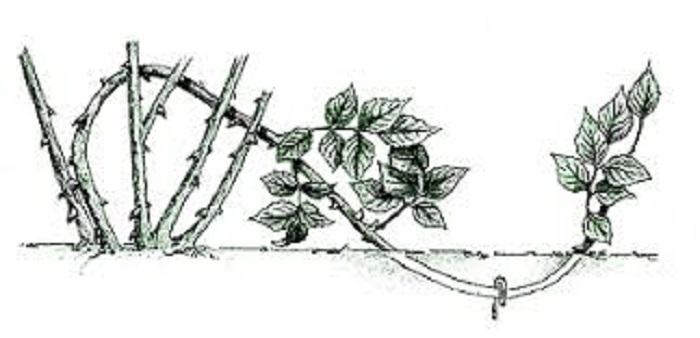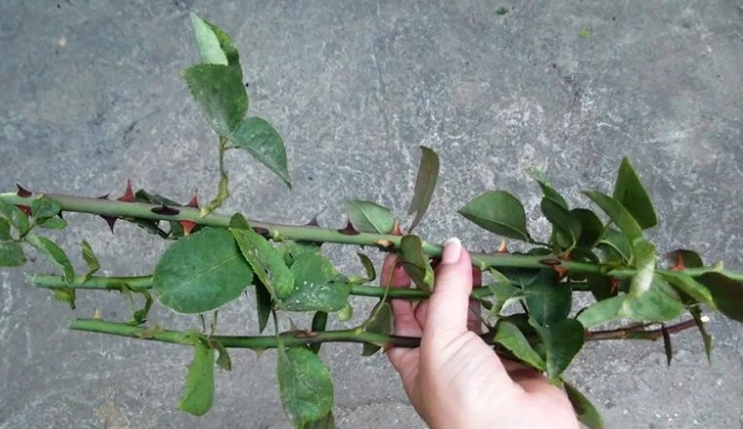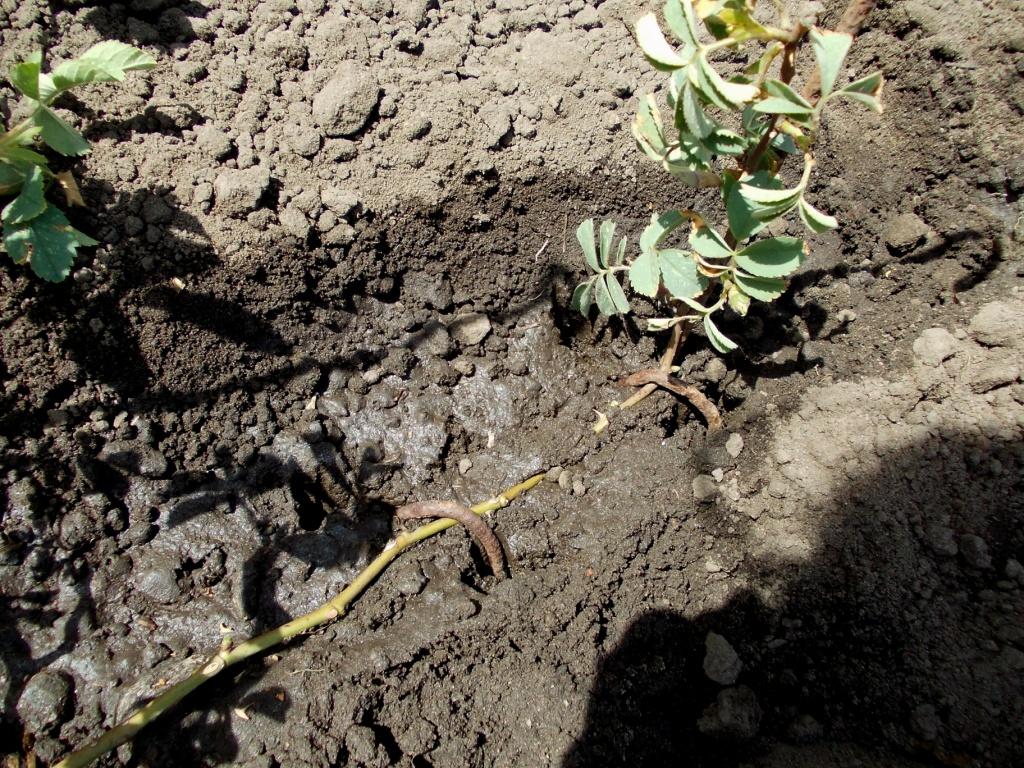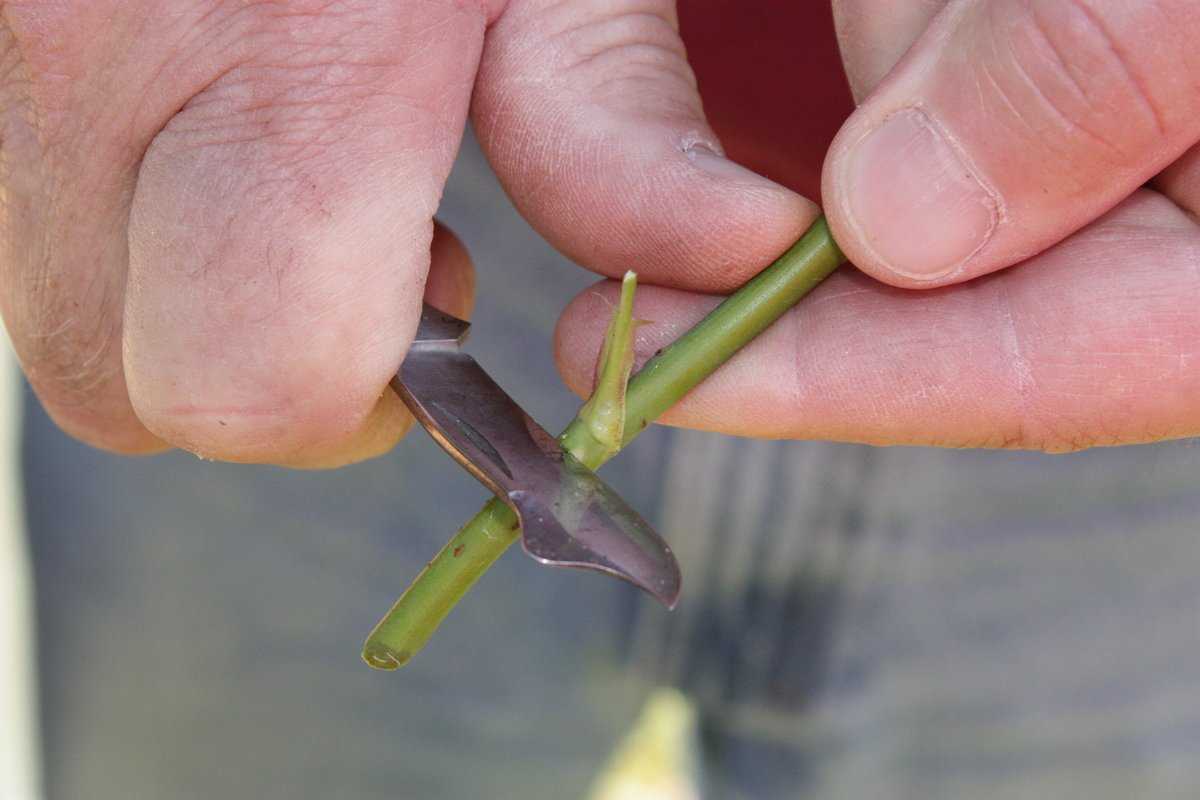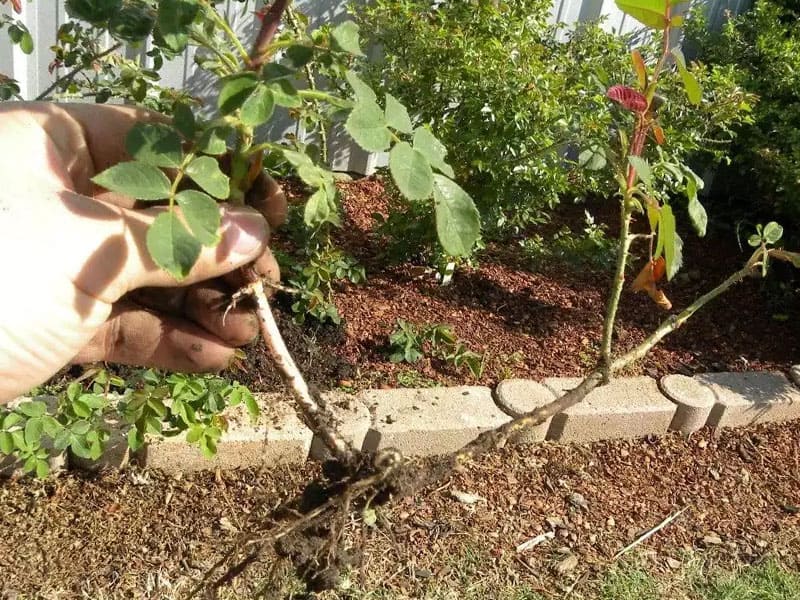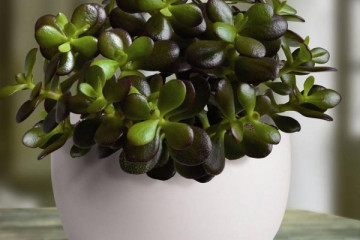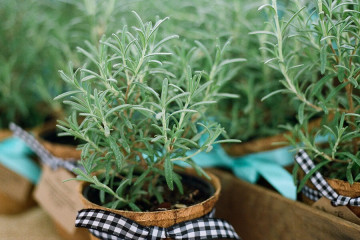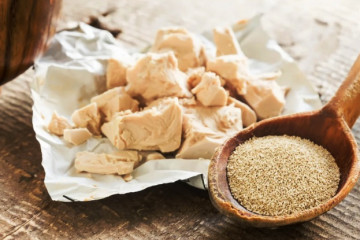Reproduction of roses - as possible, ways of rooting
Content:
Roses are distinguished by their exactingness to growing conditions. It is important that the climate where they grow is warm and the soil fertile. Among other things, growing roses requires knowing the basic methods of their reproduction. In this article, they are considered in as much detail as possible.
Reproduction of roses at home and at their summer cottage
Before breeding roses, the following issues must be resolved:
- Select a footprint. It should be well lit, with a comfortable temperature and free of drafts. Do not plant flowers in a shady place, as well as in lowlands where water is stagnant. This will lead to decay of the root system. It is best to plant roses on slopes or terraces.
- To study the basic requirements for the soil and watering rules, the main of which is not frequent, but abundant watering.
- Remember the nuances of feeding. It is carried out from the middle of summer so that the shoots can resist low temperatures.
- Consider pest control.
The main ways in which roses reproduce are:
- seeds;
- cuttings;
- dividing the bush;
- layering;
- offspring;
- vaccinations.
The most popular is the grafting method. For him they take roses with medium rooting.
Seed propagation
One way to propagate roses is by seed reproduction. It is rarely used, since the technology for collecting seeds is a rather complicated process. This method is suitable for propagation of both a bush culture and other types of roses.
Basic rules on how to propagate a bush rose by seeds:
- To make it more convenient to extract the seeds, it is necessary to choose hard fruits that are not yet fully ripe, brown in color.
- The fruit is cut with a knife and the seeds are extracted from it.
- After cleansing the pulp, the seeds are washed in water.
Some shops sell ready-made planting material. It is worth purchasing it at the end of summer.
The process of how garden roses propagate by seeds consists of the following steps:
- The washed seeds are placed in 3% hydrogen peroxide. They are kept in solution for 30 minutes.
- Seed treatment with root stimulant.
- Mixing seeds with river sand.
- The planting material with sand is wrapped in cloth, put in a bag and removed to a place where there is coolness.
- After 5-8 days, the germinated seeds are transplanted into separate containers with sterilized soil and moderate watering is provided.
- The plant is hardened before planting in the ground by periodically moving it to a cool place for several hours.
- Immediately before planting, the seedlings are taken out and the roots are spread with them. The bush is planted in separate containers.
The soil is moistened if the weather is dry.
Rooting by layering
Reproduction of roses by layering involves the use of one of the following methods:
- Horizontal. The shoot is instilled so that it takes root.
- Vertical. The cut bush is spud.
- Air. Roots are formed by weight.In this case, a bag of earth is attached to the shoot.
All methods have one important advantage - the rose variety will be guaranteed to be preserved. Also, these methods are simple to bookmark.
Propagation by horizontal layers
Steps on how to propagate a rose from a bush using the horizontal layering method:
- The shoots of the bush are cleared of leaves. It is necessary to leave 1-2 internodes at the end.
- Dipping is carried out into the prepared groove. The entire length of the handle must be dug in. The remaining leaves on the shoot are not added dropwise.
- The soil should be kept moist, for which it is watered moderately.
- The shoot, which has taken root, is separated from the mother bush and transplanted to another site.
This method is simple and easy to use.
Using vertical layering
The breeding method by vertical layers has another name - the Chinese method. This method does not work on grafted plants.
To carry out the division of roses with vertical layers, you must perform the following step-by-step actions:
- In the fall, pruning is carried out on a stump measuring 7-10 cm.
- The resulting stump is spud.
- Regrown shoots up to 10 cm are covered with earth in spring.
- Then they are filled with earth to a height of 25-30 cm as the branches grow back.
- Raking the soil is carried out in the fall.
- Separation of shoots from the bush is performed.
- They are transplanted into pots for the purpose of growing.
The disadvantages of this vegetative method: painstaking and limiting the varieties with which it can be carried out. Most of all, it is suitable for shrub and climbing species.
Air layering
The air lay method is used when the shoots cannot be bent. This method can be used for both indoor and outdoor plant species. It also applies to hybrid varieties. It's fast and lightweight.
The whole process consists of the following steps:
- On the part of the shoot, which has become decayed, the bark is removed in the form of a strip 1.5-2 cm long.
- A plastic bag is attached to the bottom of the ring.
- Fill the bag completely with soil. The ring should be covered with soil.
- Tie the bag tightly.
- In two or three places, the bag is pierced.
When roots are formed, the shoot is cut from the bush and transplanted into a pot.
Green grafting method
Green grafting can be applied to garden or hybrid species (eg tea variety). This method uses semi-lignified cuttings. It is held in the summer.
For this method, take the middle part of the shoots when they are still blooming in the garden. In this case, the following technological conditions must be observed:
- The length of the handle should be 6-9 cm.
- Leaves are trimmed to 1/3 of their length.
- The leaves are removed from the bottom.
- The cut must be straight and even, 1 cm higher than the kidney.
- The cut from the bottom is made at an angle of 45 °.
- Before the rose is rooted, the cutting is placed in a heterooxin solution and left there for two days.
- The culture is instilled at an angle of 45 °.
- Every day it is sprayed with water.
The planted cultures are covered with foil or glass. The plant is left for the winter, covering it with additional material. It takes years to get a developed rose nursery.
There is another, homemade method that allows you to root cuttings. To do this, they are pre-planted in a potato tuber.
Lignified cuttings method
This method is perfect for cultivating park roses or hybrid ones (for example, tea varieties or rugosa variety).
The features of this technology are as follows:
- It uses lignified cuttings.
- The stems must be ripe and even, 3-6 mm thick.They are prepared in the fall.
- In the spring, cuttings 9-11 cm long are made from the stems.
- The cuttings are placed in water.
- Next, the shoots are planted in the ground and watered abundantly.
Reproduction by root suckers
Root suckers are shoots that grow on the thin roots of the mother bush. They are harvested in the fall.
The technological stages are as follows:
- The offspring are added dropwise along with part of the root system of an adult flower.
- The upper part is trimmed, leaving 9-11 cm.
- The finished material is planted in a greenhouse or open bed.
Dividing the bush
This technology is applied in early spring or autumn. It is suitable for roses that grow on their own roots.
Reproduction of a rose by dividing a bush involves the following actions:
- In the evening, they dig up the roots of the rose. If the bush has grown strongly, then it is dug in from all sides and, having slipped a shovel along the roots, is pulled out of the ground.
- The main root is examined and the grower decides how many parts it will be divided into. How many branches or buds the root will have depends on this. A sharp knife or pruner is used for separation.
- Then the delenki are dipped in a mash made of clay and mullein.
- Then they are planted in the ground. The root collar of the cut should be strictly at the level of the soil.
- Plantings are abundantly watered and mulched.
After a year, a bush grows out of the cuttings. Caring for such plants is no different from caring for other species.
The transplanted crops begin to bloom in the second year after planting. Roses are fed after they are fully rooted. Nitrogen fertilizers are applied from May to July.
Since August, roses are fertilized with superphosphate and potassium salt. Nitrogen fertilizers are completely eliminated.
Reproduction method by grafting
This method is often used. However, not all types of culture are able to survive and take root after it.
The technological stages are as follows:
- The neck is excavated and cleared of the earth.
- With a well-sharpened knife or a sharp razor, make a small incision above the neck in the form of a T on the north side of the stock (the length of the incision is about two centimeters).
- Remove the bud from the cutting.
- The incision is spread with an budding knife.
- The kidney is placed in the incision. It should go completely into the gap.
- The vaccination site is tied with polyethylene. The kidney should not be constrained by a bandage.
- At the end, the plant is spud with soil.
This method will require accuracy and care from the gardener.
When is the best time to breed
The following periods can be distinguished in the propagation of roses: spring, summer and autumn. Reproduction in summer is the most successful. Due to the fact that planting is carried out in warm soil, the root system is well fixed and grows.
In order to propagate roses in the spring, planting material is prepared from the end of March. In April, seedlings are planted in special containers or on racks.
In the fall, before the roses are warmed for the winter, the branches that have been cut are cut into plastic dishes. The material is planted in it in the usual way.
It takes patience to grow roses. Which breeding method to choose is up to each gardener independently. Each method has its own advantages and disadvantages.

